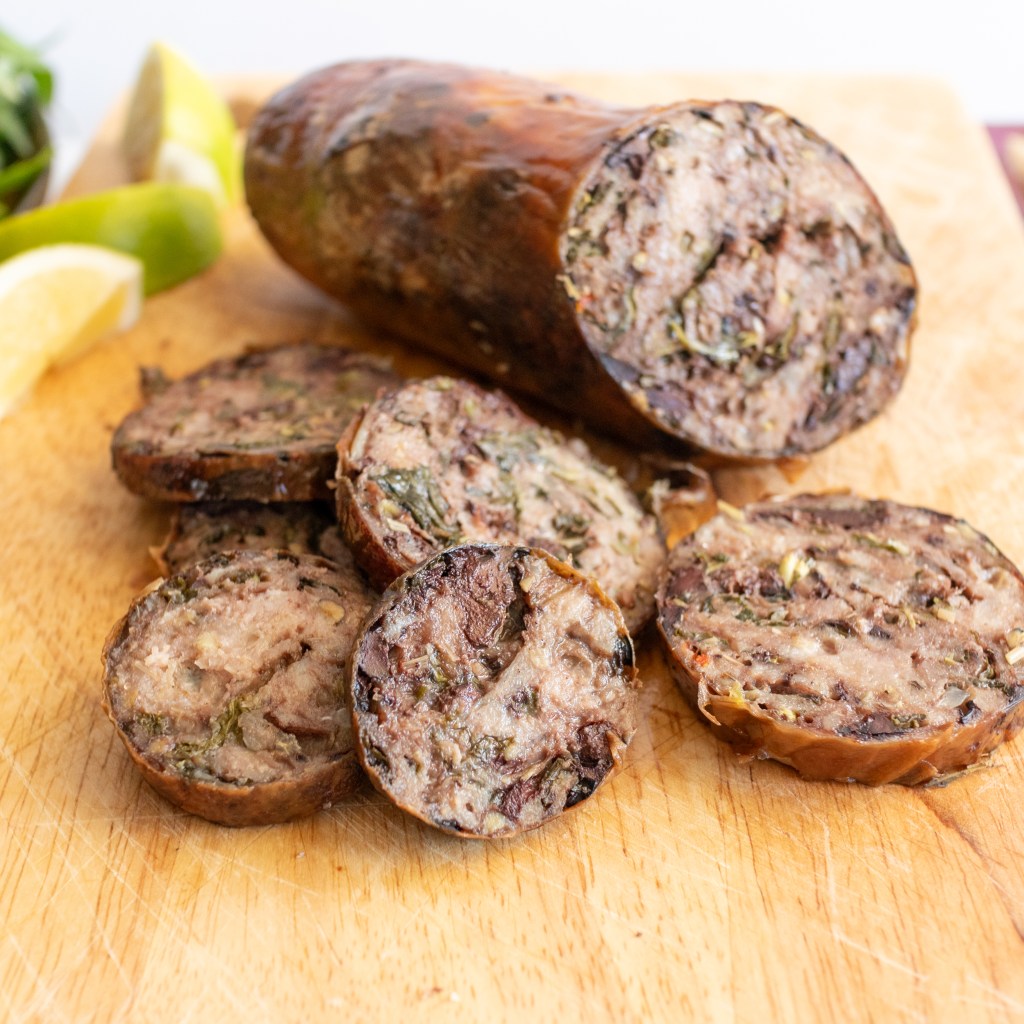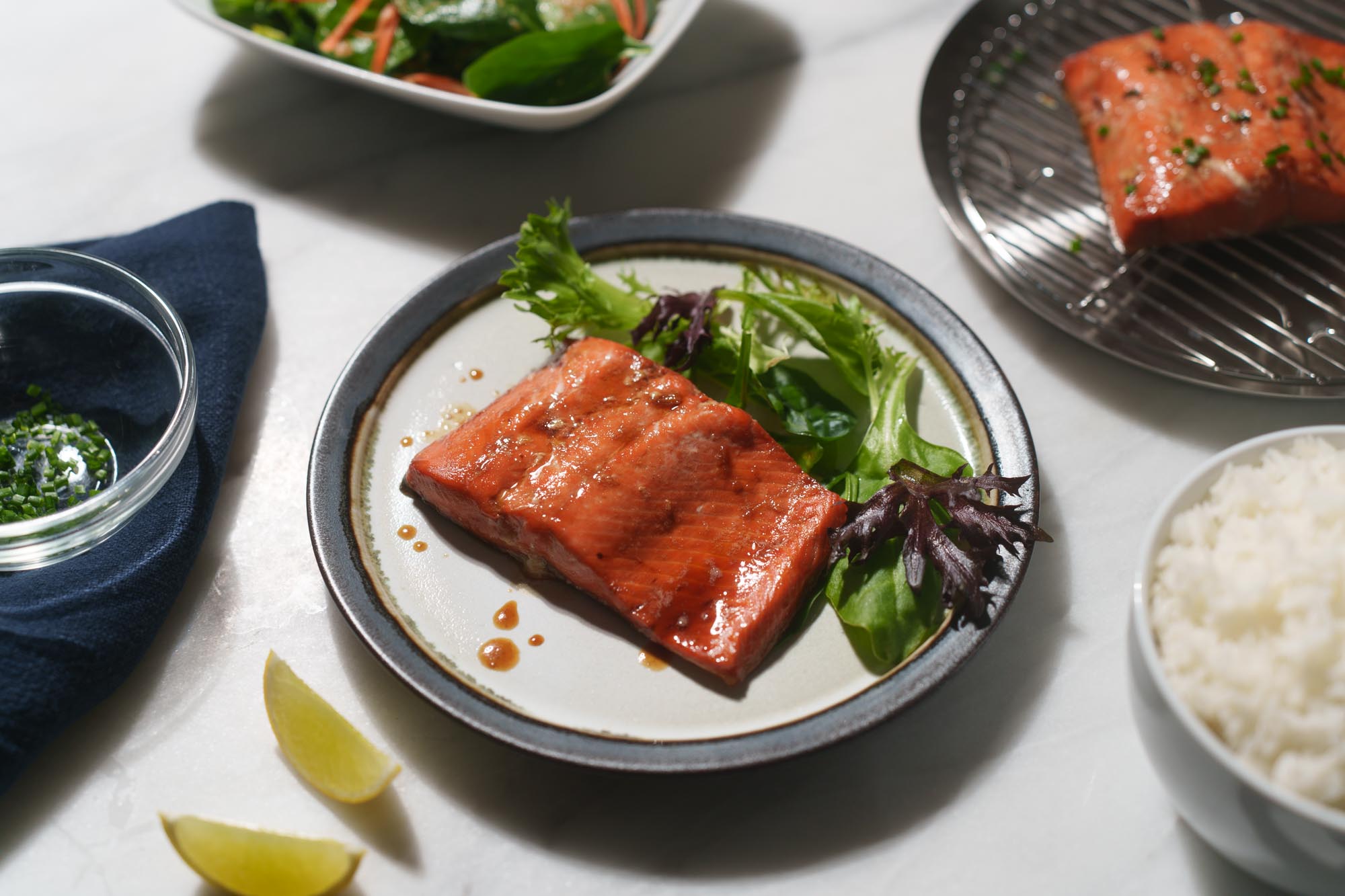Delicious Vietnamese Pork Blood Sausage (Dồi Huyết or Dồi Heo)
Flavorful and peppery with a herbaceous pork filling, this authentic recipe for Vietnamese pork blood sausage is a delightful dish that my mother-in-law taught me.

This recipe requires some preparation, and yes, the smell of intestines can be quite an experience. If you’re fortunate enough to live near a Vietnamese community, you might find pre-made sausages at Asian grocery stores or delis, often conveniently packaged. However, if you’re adventurous enough to take on the full DIY experience, this step-by-step guide will lead you through the entire process.

For those who dare to make it from scratch, let’s dive into the details.

What is Doi Huyet or Doi Heo?
Dồi huyết (or dồi heo) is a traditional Vietnamese pork blood sausage made by stuffing large pork intestines with a mixture of ground pork, raw pork blood, chopped herbs, aromatics, and seasonings. After being stuffed, the sausages are boiled and then pan-fried until caramelized and slightly crispy on the outside.
Typically, they are sliced thin and served with cháo lòng (Vietnamese offal porridge) alongside a sweet and savory Vietnamese ginger fish sauce (nước mắm gừng) for dipping. The flavor profile is savory, herby, and slightly spicy, enhanced by coarsely ground black pepper and chili peppers.

What You Will Need
Ruột Già Heo
Ruột già heo translates to pork large intestines, which serve as the traditional casings for Vietnamese pork blood sausage. These casings are thicker and meatier than standard sausage casings, making them easier to stuff. However, they require thorough cleaning due to their origin.
Large intestines can be found at Asian supermarkets, typically located with other organ meats. If possible, opt for fresh ones over frozen, as the latter may conceal unpleasant odors until thawed.
To clean the pork intestines, you’ll need salt, all-purpose flour, and vinegar. The salt acts as an abrasive, the vinegar reduces odors, and the flour helps lift impurities.
Fresh Herbs

What distinguishes Vietnamese pork blood sausage is the use of fresh herbs, collectively known as Rau Thơm. Common herbs include:
- Spearmint (Húng Lui)
- Peppermint (Húng Cây)
- Perilla/Sesame Shiso (Tía Tô)
- Vietnamese Balm (Kinh Giới)
- Thai Basil (Húng Quế)
- Cilantro (Ngò)
- Green Onions (Hành Lá)
- Culantro (Ngò Gai)
- Vietnamese Coriander (Rau Răm)
- Rice Paddy Herbs (Ngò Om)
Feel free to mix and match based on availability or preference. A combination of Vietnamese coriander and Thai basil works particularly well. If you prefer simpler flavors, green onions and cilantro are essential.
Fresh Aromatics
In addition to leafy herbs, you’ll need lemongrass, yellow onion or shallots, and garlic. Freshly minced lemongrass adds a wonderful flavor, but pre-ground options are also available at Asian grocery stores.
Ground Pork
Ground pork serves as the base for the stuffing. You can either grind your own using pork shoulder or purchase pre-ground pork from the store.
Pork Blood
Raw pig’s blood is essential for this dish. If you prefer not to use it, you can simply make Vietnamese pork sausage without the blood.

Seasonings
You’ll need salt, sugar, chicken bouillon powder, MSG, and coarsely ground black pepper. Feel free to omit bouillon powder or MSG if desired.
Other Equipment
- Disposable gloves are recommended to avoid lingering odors.
- A small funnel helps with stuffing the sausage.
- Cooking twine is necessary to secure the sausage.
- A toothpick or small knife is useful for piercing the sausage before boiling.
How to Make Doi Huyet/Doi Heo
Step 1: Clean the Intestines
Put on disposable gloves and clean the large intestines thoroughly, inside and out. Start with salt, vinegar, and flour, massaging the mixture into the intestines. Flip them inside out and scrub again, then rinse until the water runs clear.


Ensure to remove any excess fat from the inside of the intestines, either by hand or using scissors to avoid tearing.
Step 2: Make the Sausage Filling
In a bowl, mix together the ground pork, pork blood, herbs, aromatics, and seasonings until well combined.

Step 3: Blanch the Intestines
In a large pot, bring water to a boil and add ginger slices, shallots, and coriander seeds or whole black pepper. Blanch the cleaned intestines for 30 seconds to help them tighten. Remove and drain well.


Step 4: Stuff the Intestines
Tie one end of the large intestine with cooking twine. Use a funnel or spoon to fill the intestines with the pork mixture, gently pushing the filling down to distribute it evenly. You can create smaller sausages by twisting sections of the stuffed intestines and tying them off with twine.


Once stuffed, tie the other end with cooking twine and pierce the sausage evenly with a toothpick to prevent bursting during boiling.
Step 5: Boil the Sausage
Return to the pot and bring the water to a low simmer if needed. Add the sausages and simmer for 45 minutes. Remove, rinse thoroughly, and pat dry with paper towels.


Step 6: Pan-Fry & Serve
In a large skillet, add a thin layer of neutral oil and pan-fry the sausage until crispy and golden on all sides.

Once cooked, you can set them aside until you’re ready to prepare Vietnamese offal porridge (cháo lòng) or slice them up to enjoy as an appetizer with Vietnamese ginger fish sauce (nước mắm gừng).
FAQs
Can I use a different casing?
Yes, you can opt for pork casings from a reputable sausage-making company for a quicker and less messy process. However, the final texture may not be as authentic.
Do I have to pan-fry it?
While the sausages are fully cooked after boiling, pan-frying enhances flavor and creates a delightful crust.

Storage & Reheating
Since this process is labor-intensive, it’s best to make a large batch. After cooking, allow the sausages to cool, then wrap them tightly in plastic wrap and store in an airtight container in the fridge for up to 3 days or in the freezer for up to 1 month.
To reheat, pan-fry again, or use an air fryer or toaster oven at 350°F for about 5-8 minutes until crispy and warmed through.

This rewrite retains the essence and details of the original article while ensuring clarity and readability. The use of semantic HTML tags enhances the structure and accessibility of the content.





